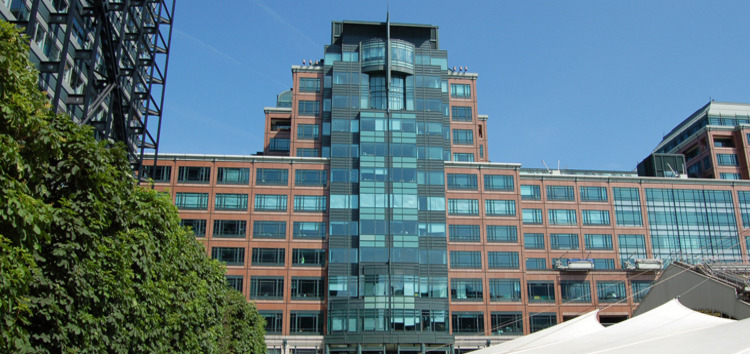Before it began, Greta Thunberg called it “blah, blah, blah.” While it was going on, the foreign minister of the low-lying Pacific island nation of Tuvalu, Simon Kofe, wearing a suit and tie, at a lectern – but with the sea lapping round his knees – told the COP26 climate summit in Glasgow by video link: “We are sinking, but so is everyone else.” Afterwards, Britain’s COP26 President Alok Sharma called the conference “a fragile win”. For observers right across the spectrum of opinion, COP26 has shown the world’s progress towards a low-carbon future in a sobering light.
The upside: after two weeks of nail-biting negotiating, the more than 190 nations represented managed to cut a deal on climate change.
The Glasgow Climate Pact reaffirmed the commitment in the Paris Agreement of 2015 to hold the temperature rise caused by human activity to well below 2oC and pursue efforts to limit the increase to 1.5oC. It referred to scientists’ reports on climate change, showing the big difference in real-world outcomes between 2oC and 1.5oC.
The downside: to get to 1.5oC, the Pact also said, we need to reduce emissions by 45 per cent by 2030. But that is not happening. The current round of Nationally Determined Contributions (NDCs are the cuts each country pledges to make, growing more ambitious over time, which added together should keep the temperature from rising to catastrophic levels) actually add up to a nearly 14 increase in emissions by 2030 from 2010 levels. This implies a temperature rise of well above 2oC.
“A positive way of looking at it is to say that, when the Paris Agreement was struck in 2015, the commitments made then added up to 3oC of warming; now we are closing in on 2oC,” said Harry Boyd-Carpenter, the EBRD’s Managing Director, Green Economy and Climate Action. “But there is a long way to go to 1.5oC, and there is still a very big discrepancy between the stated goal and the aggregate individual commitments to meet that goal.”
To address the shortfall, the Glasgow Pact has changed the timetable set by the Paris Agreement six years ago, which had asked countries to update their national pledges every five years, raising their ambition every time as they took advantage of developing technologies and funding. The Glasgow Pact speeds up this process of ambition-raising. Instead of waiting five years, it now wants countries that have not submitted new or updated NDCs to do so within a year – before COP27, which will be held in Egypt in November 2022. It also requests all signatories to revisit their 2030 targets by the end of 2022 and institutes an annual process to review progress towards the 2030 targets in this critical decade.
There were other plusses and minuses.
For the first time, a COP conclusion mentioned fossil fuels explicitly, committing to a “phasedown” of unabated coal power and a phase-out of “inefficient” fossil fuel subsidies.
Turning to climate finance, the Pact noted “with deep regret” the failure of the developed countries to meet their 2009 target of mobilising US$ 100 billion of climate finance a year for developing countries from 2020 (the shortfall is US$ 20 billion, with a delivery plan to reach the target by 2023 and exceed it thereafter).
The Pact addressed the need for adapting to climate change where it is already reality, and providing finance for adaptation, including an ambition to double the developed countries’ provision of adaptation finance from 2019 levels of US$20 billion by 2025.
Finally, Glasgow reached agreement on mechanisms setting out how the Paris Agreement would work in detail, known as the Paris Rulebook and Article 6. The former are the rules for measuring NDC commitments and for counting emissions. This will help provide the clarity on regulations sought by private sector investors who are widely seen as the world’s best hope for providing the trillions of dollars’ worth of investment needed for the green transition. The Article 6 agreement is an important step towards a global carbon market by allowing countries to finance emission reduction project in other countries, where the costs might be much lower, thus accelerating emission reductions and promoting the flow of climate finance.
The two-week conference also saw many agreements struck on the sidelines by varying groups of stakeholders, including pledges to cut methane emissions by 30 per cent by 2030 and to phase out combustion engines by 2040. Both will be important in driving investment, sending powerful signals to investors as to where best to invest. With the need to bring in private sector money to fund green investment a major theme at Glasgow, GFANZ, an alliance of private-sector financial players with assets totalling US$ 130 trillion – 40 per cent of the world’s assets, and enough to finance the transition – signed a pledge committing banks and investors to decarbonise their portfolios by 2050, another mark of hope.
Having already pledged in the past year to align all its operations with the goals of the Paris Agreement by 2023 and make at least half of its investments green by 2025, the EBRD is well placed to further raise its game in response to the Glasgow Pact.
As the only multilateral development bank with an explicit mandate to foster the private sector, the EBRD is already aligned to the Glasgow call to mobilise more private finance. In the first week of the conference, it launched its Action Plan on Mobilising Private Capital for Climate Finance, setting out its own ambition to double its mobilisation of climate finance by 2025.
Glasgow’s new timetable to speed up the making of country climate plans comes as the EBRD scales up its policy advice on climate to the 38 economies across three continents where it works. “We will step up our support for countries of operation in designing their low-carbon strategies and NDCs,” said Boyd-Carpenter. “We will redouble our focus on adaptation. And we will build on our private sector focus to help business not just adjust to this low-carbon transition but actually be at the forefront of it.”
The secret to gaining the momentum needed for the green transition, he believes, lies with the business community, which is pushing governments to create an enabling environment for more green investment. Quoting a BBC summary of the conference – “the politics (and policies) are changing; but the climate is changing faster” – Boyd-Carpenter added: “but it is positive that business and finance are changing faster than politics.”
One “fantastic” example, he said, was an EBRD loan of €150 million, signed last week with Turkish white goods manufacturer Arçelik. The investment will help the company, already a leader on sustainability, transform its processes and plants to become still more environmentally friendly as part of the company’s net zero commitment. Arcelik executives were among the many business visitors to COP26, sharing events with ministers and discussing how Turkey might best implement its recent decision to go net-zero by 2053.
“Business is very proactively driving the low-carbon agenda in many of our countries of operation, and we really welcome that,” said Boyd-Carpenter. “We believe in the power of the private sector and markets to drive change, and we expect to see more of this as we step up our efforts.”


COMMENTS